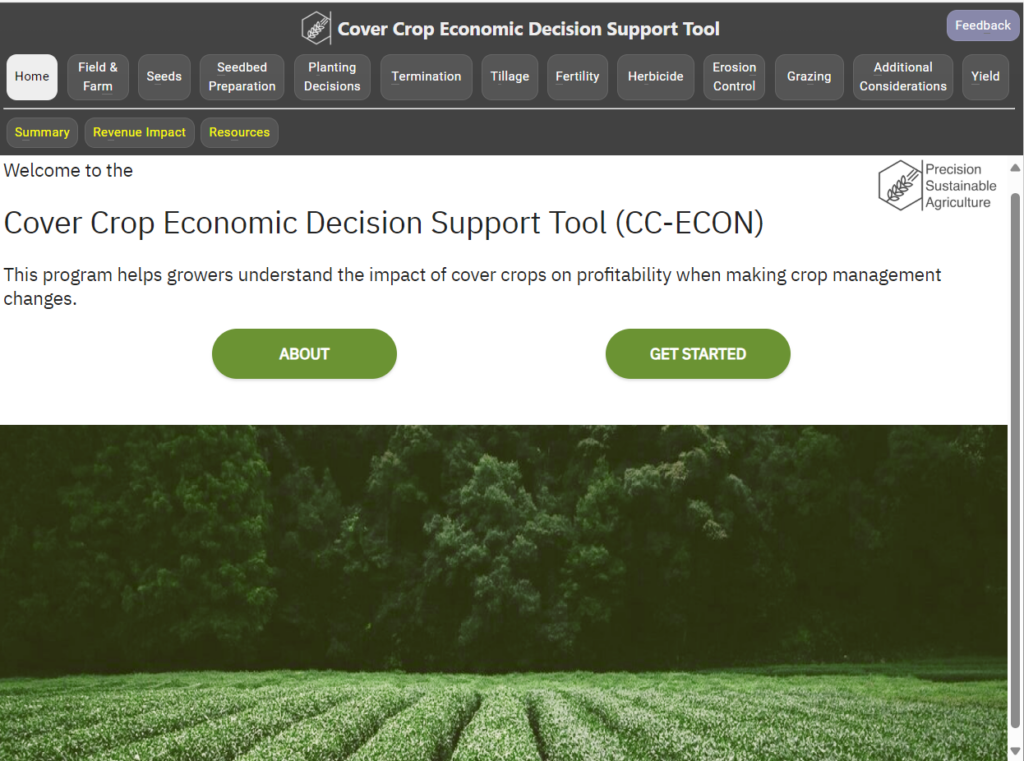Cover Crop Costs / Time
go.ncsu.edu/readext?1012548
en Español / em Português
El inglés es el idioma de control de esta página. En la medida en que haya algún conflicto entre la traducción al inglés y la traducción, el inglés prevalece.
Al hacer clic en el enlace de traducción se activa un servicio de traducción gratuito para convertir la página al español. Al igual que con cualquier traducción por Internet, la conversión no es sensible al contexto y puede que no traduzca el texto en su significado original. NC State Extension no garantiza la exactitud del texto traducido. Por favor, tenga en cuenta que algunas aplicaciones y/o servicios pueden no funcionar como se espera cuando se traducen.
Português
Inglês é o idioma de controle desta página. Na medida que haja algum conflito entre o texto original em Inglês e a tradução, o Inglês prevalece.
Ao clicar no link de tradução, um serviço gratuito de tradução será ativado para converter a página para o Português. Como em qualquer tradução pela internet, a conversão não é sensivel ao contexto e pode não ocorrer a tradução para o significado orginal. O serviço de Extensão da Carolina do Norte (NC State Extension) não garante a exatidão do texto traduzido. Por favor, observe que algumas funções ou serviços podem não funcionar como esperado após a tradução.
English
English is the controlling language of this page. To the extent there is any conflict between the English text and the translation, English controls.
Clicking on the translation link activates a free translation service to convert the page to Spanish. As with any Internet translation, the conversion is not context-sensitive and may not translate the text to its original meaning. NC State Extension does not guarantee the accuracy of the translated text. Please note that some applications and/or services may not function as expected when translated.
Collapse ▲The financial cost of cover crops remains one of the most significant barriers preventing growers from implementing them on their farms. Several benefits of cover crops are hard to quantify in monetary terms, making it more difficult for farmers to justify the additional expense. Cover crop costs can vary drastically across operations, and farmers must perform a thorough cost analysis to determine whether cover crops fit their operations.
Cover crops often fail a cost-benefit analysis if only examined in the short term. Farmers who have successfully adopted cover crops frequently stress the need to consider them a long-term investment. Farmers must decide if these costs are worth the benefits they may not realize for several years.
Economic Decision Support Tool
The Cover Crop Economic Decision Support Tool, developed by Precision Sustainable Agriculture, is an online software that allows growers to perform a cost-benefit analysis of their cover crop practices.
Producers can input increases and decreases in operational cost and revenue resulting from cover crops. Allowing them to better assess how cover crops are impacting their bottom line.
Cover Crop Direct Costs
Direct costs are related to the actual management of cover crops. They are often the easiest to calculate since they pertain to input (seed), time, and equipment costs.
Planting
- Seed
- Time/Labor
- Equipment
Termination
- Time/Labor
- Equipment
Additional Inputs
- Nutrients for cover crop (if applicable)
- Additional herbicide for termination (if applicable)
- Nitrogen to account for immobilization
Direct costs can significantly increase if additional equipment is purchased for cover crop management. Farmers need to decide if purchasing equipment is worth the expense to manage cover crops in a certain way. For example, a farmer may want to purchase a roller-crimper to terminate a cover mechanically and lay the residue down on the soil surface.
Cover Crop Indirect Costs
Indirect costs affect a farm’s cash crop. While cover crops may have several benefits for cash crops, they also have the potential for negative impacts, especially without proper management.
These indirect costs are often listed as the “challenges” or “risks” of cover crops. They become an actual cost when they create economic damage to cash crops. Management decisions will influence the likelihood and severity of these challenges and costs.
- Decreased Soil Moisture
- Slower Soil Warming Temperatures
- Transfer of Pests or Pathogens
- Potential Yield Reductions
Cover Crop Opportunity Costs
The most notable opportunity costs are a foregone cash crop and the loss of income from a field in cover crops. Farmers need to decide if a cover crop’s long-term benefits outweigh the cash crop’s income for a given season. When making this decision, it is important to remember that cash crops often require more intensive management, and these costs need to be deducted from any foregone revenue when assessing the opportunity cost.
Time
Successfully managing cover crops requires a time commitment from growers, and this cost needs to be considered. The direct costs can account for time spent planting and terminating cover crops. However, many farmers must dedicate time to learning about and researching cover crops to implement them on their farms.
Having adequate knowledge about cover crop management is crucial for success. Farmers need to determine if they can afford the time required to educate themselves on cover crop management to improve their outcomes.
References
- Bergtold, J. S., Ramsey, S., Maddy, L., Williams, J. R., & Department of Agricultural Economics, Kansas State University. (2017). A review of economic considerations for cover crops as a conservation practice. In Renewable Agriculture and Food Systems (pp. 1–15) [Journal-article]. https://doi.org/10.1017/S1742170517000278
- Duiker, S. W. (2023, October 31). Economics of cover crops. Penn State Extension. https://extension.psu.edu/economics-of-cover-crops



